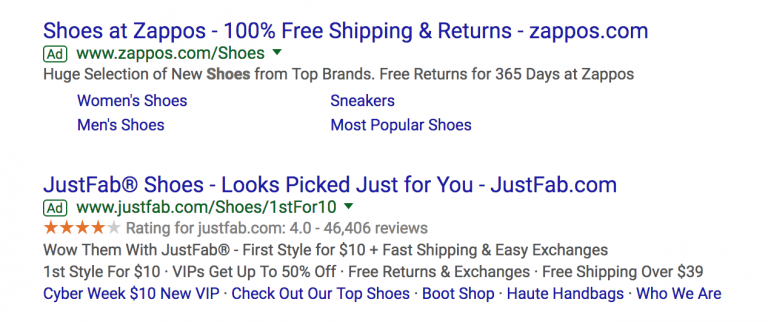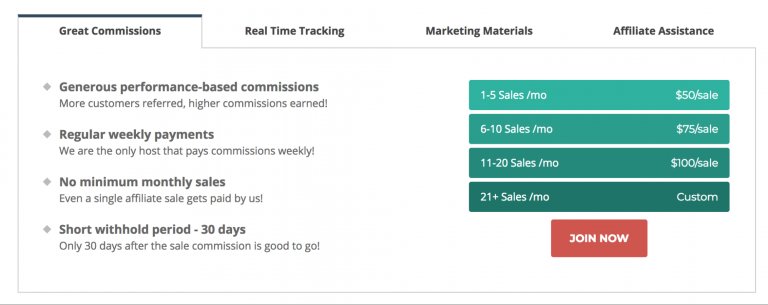Digital marketing is a deceptively simple sounding phrase, but this umbrella term covers every facet of your online marketing strategy. To create an effective master plan we need to understand all those facets. Let’s take a look at the cogs that make up a fully-functioning digital marketing machine.
1. Video marketing
Video marketing refers to any video you create for your business. This includes ads, content for your YouTube channel, the videos you upload to Facebook, product demo videos, and live streams.
According to HubSpot’s State of Inbound 2017 report, 45% of people watch at least an hour of Facebook or YouTube videos a week. Cisco predicts that by 2021 video will make up 82% of all consumer traffic, making it an increasingly important ingredient to a well-rounded digital marketing strategy.
Adding video to your marketing strategy is getting easier. Easy video creation tools like Biteable, simple video editors, and increased wireless and mobile internet speeds have made video cheaper to produce and far more accessible to consumers.
When adding video to your digital marketing strategy:
- Chose the right type for you: There are many different styles of video. Chose a medium that works for you and your business — something you enjoy doing and can keep doing consistently.
- Make it fit the platform: When we watch videos on YouTube or Facebook, we look for different things. To give your video its best chance, follow each platform’s best practices.
- Support a specific goal: Every piece of content your produce should support a specific, measurable marketing goal. Creating (and following) a content calendar can help you stay on track.
2. Pay per click and display ads
Pay per click and display ads allow marketers to advertise their products to a targeted consumer base. But what’s the difference between the two?
Pay per clip ads

PPC ads are the paid links that show up near the top of search engine results when you search for a specific term. These PPC ads showed up when we Googled “shoes.”
Display ads

Display ads are the ads you see on various websites and often include images. Display ads can appear based on a site’s theme or a keyword string. This display ad for Squarespace appeared on the side of a Mashable article about Facebook Messenger for kids.
Both types of ad can be incredibly useful for getting your product and service in front of the right person.
Successful PPC and display ads are:
- Highly targeted: When setting up your ads, be super picky (and specific) about the parameters. This narrows down how many customers will see your ad but increases the chances it will show up in front of the right people and lead to a better conversion rate!
-
A part of a larger digital marketing strategy: Ads will work better when used alongside a solid content marketing strategy. Moreover, if you implement a solid SMS marketing campaign, the results will be even better.
- Thoughtfully written There are a number of simple rules to follow in order to create successful ad copy for PPC.
- Meticulously tracked: Track the success rates of every ad campaign you run and use the data to consistently improve your conversion rates.
3. Search engine optimization and content marketing
Nowadays, consumers have more choice about who they do business with than ever. Producing helpful content that answers real questions and helps buyers make informed choices can propel you to the front of the line. This content can be anything from blog posts and infographics to videos and free microlearning videos.
In order for visitors to find your content, you need to optimize it for search engines. A search engine like Google wants to show users the most relevant results possible, so it scans every page on the internet to learn what that page is about.
Let’s say your ideal customer is looking for a way to get to Oz and you sell red slippers. Writing a blog post that includes the phrases “travel to Oz,” “time travelling red slippers that will take you to Oz,” and “quick way to get to Oz” will tell the search engine what your post is about, so that next time an adventurer doesn’t want to rely on freak cyclones, your article will show up in search.
To create content that delights both readers and search engines, keep it:
- Specific: Write content that helps your ideal reader solve real problems. The more niche you can get, the better.
- Helpful and informative: Don’t just write the same old stuff or copy your competitors. Create original content based on your customer’s real questions. Not sure what they are? Ask.
- Super readable: Our eyes didn’t evolve for screens, so make written content easy to read. Keep paragraphs and sentences shorter, use subheads to break down walls of text, add images, and leave plenty of white space.
4. Social media
Social media marketing comes in two flavors: paid and organic.
Organic marketing happens when you create a profile on your chosen social media platform and consistently share great content that people like and share. Paid marketing refers to buying and using ads to reach a wider targeted audience. Every social media platform has its own ad manager.
To be effective, you need to get strategic. While it’s tempting to jump in and try to master multiple channels at the same time, this can put a strain on your resources. Instead, focus on building your presence on one platform at a time, starting with your ideal audience’s favorite.
To master your chosen platform:
- Craft a strategy: Don’t just post haphazardly. Decide from the get-go what you hope to get out of using that channel, create measurable goals, and then track them.
- Create a social media content calendar: Plan your posts in advance to support specific marketing goals or promotions.
- Post regularly and consistently: It’s easy to get caught up in the day-to-day and forget to post. But if you want to grow organically (always a good idea, even if you use ads to complement it), you need to show up. Using a social media dashboard to schedule your posts in advance is a great way to set yourself up for success.
- Engage: Don’t just say your piece and then ghost your followers. Engage with them in the comments and answer questions — social media is a two-way conversation.
5. Email marketing
Email marketing includes all the various emails you send your customers, including newsletters, nurturing sequences, sales sequences, promotion emails, and blog post updates.
The point of email marketing is to build trust with your list by consistently offering value through sharing knowledge and exclusive offers. If people trust you, they’ll be more likely to be loyal to your product and listen when you’re promoting something.
Effective emails:
- Have a purpose: They respect your customer’s time and always offer something useful in return — whether it’s a special promo or a really interesting insight.
- Have a strong CTA: Always end an email with a clear call to action: let the reader know what you want them to do next.
6. Affiliate marketing
Affiliate marketing is when a group of people who use and like the product (affiliates) sell it to their audience in exchange for a percentage of the sale.
When done right, this type of relationship can be incredibly lucrative for the business and the affiliate. Patt Flynn from Smart Passive Income built his career through affiliate marketing and offers a lot of in-depth advice about getting started from the affiliate’s perspective.
So what does this relationship look like? Let’s take a look at how SiteGround, a web hosting platform handles it.

SiteGround built an entire resource that breaks down the commission structure and tells potential affiliates exactly what to expect. The team have put a lot of effort into structuring the page and created marketing materials that affiliates can use in their promotions. Potential affiliates can then apply to join the program and sell SiteGround hosting to their audience.
Great affiliate-business relationships are defined by a couple of things:
- A shared audience: People who work with the same audience but sell a non-competing product are a great choice for affiliate marketing because you speak the same language.
- A common vision: As customers are becoming more discerning, who sells your products matters. Someone who runs a blog on the keto diet is not going to be the best affiliate for sugar cookies. The disconnect between their personal beliefs and the product can really undermine trust with the audience.
- Belief in the product: We’re getting tired of bogus marketing tactics. The best affiliates know what your product does and dig it. Ideally, they use it in their own day-to-day.
Diving into the world of digital marketing
We looked at the different faces of digital marketing. If you’re transitioning from mostly offline efforts, pick one type of digital marketing, create a plan, and build an audience. When everything is running as smoothly as possible, add a second and so on. Beware of trying to do too much at once unless you have the team-power and capital to support your efforts. Good luck out there!

